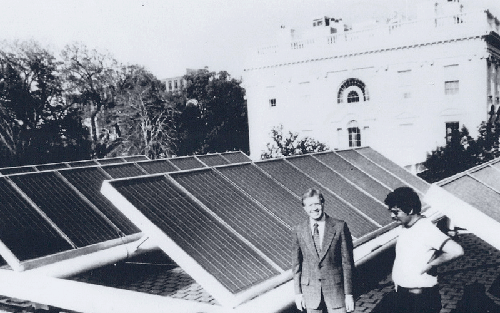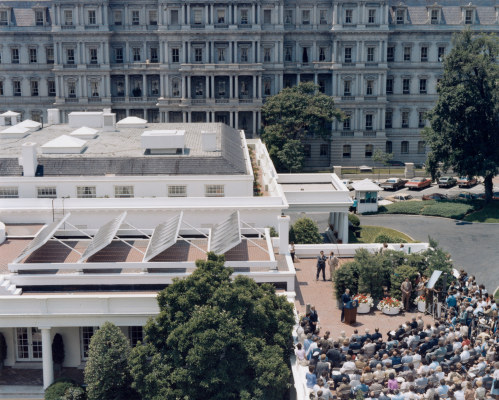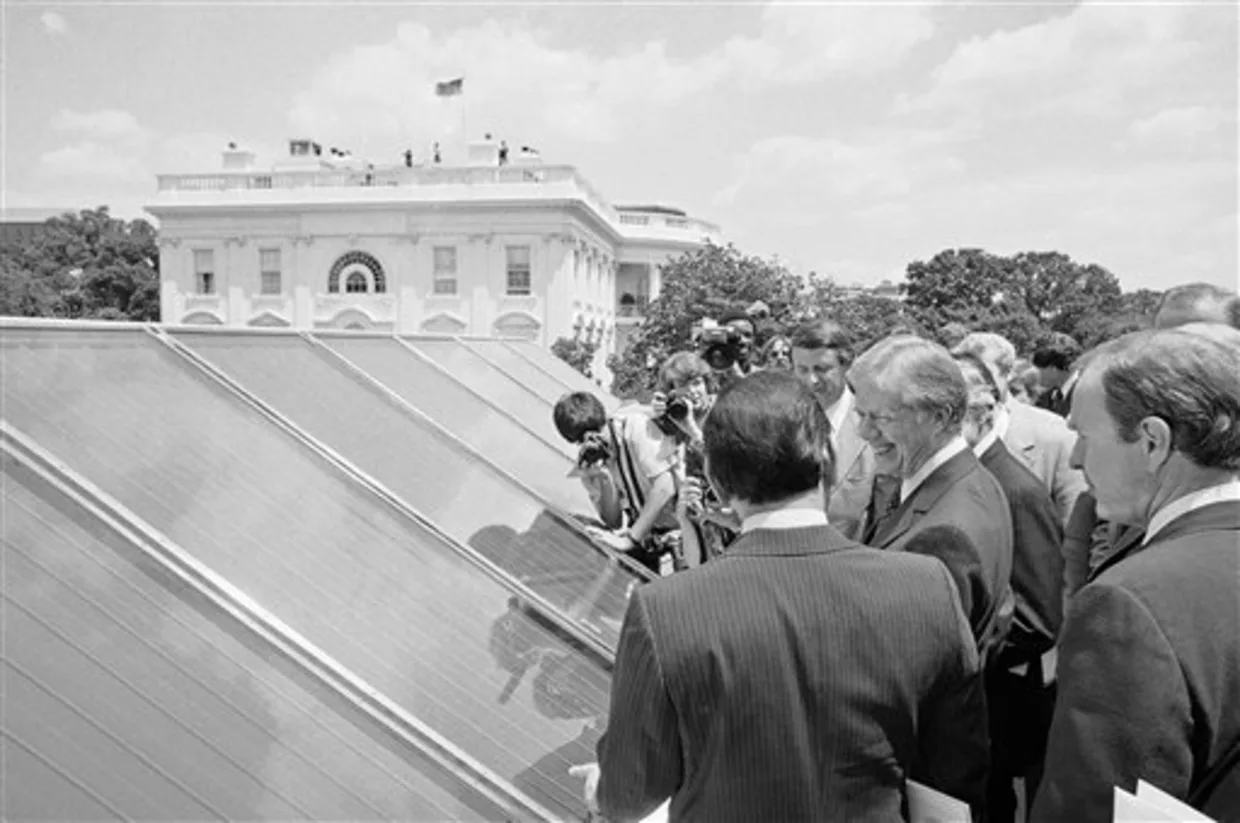In June 1979, President Jimmy Carter made a bold statement about renewable energy by installing 32 solar thermal panels on the roof of the White House. This event was not just a practical move to heat water for the White House but also a powerful symbol of the United States’ commitment to harnessing solar energy during an era marked by an energy crisis. The installation of these panels represented a significant shift in public perception regarding renewable energy, encouraging many to consider solar thermal systems as viable alternatives to traditional fossil fuels.
The Impact of Carter’s Solar Panels
Carter’s installation was projected to supply nearly 75% of the hot water needed for the White House kitchen and laundry. The flat plate collectors worked by absorbing sunlight, which heated water circulating behind them. This innovative approach showcased how solar energy could be utilized effectively in everyday applications. Carter famously stated that in the year 2000, these solar water heaters would still be supplying “cheap, efficient energy,” highlighting his vision for a sustainable future.
The installation cost around $28,000 at the time, which translates to approximately $100,000 to $120,000 today when adjusted for inflation. This investment laid the groundwork for future advancements in solar technology and inspired both individuals and businesses to explore solar solutions.
A Shift in Perception and Costs
Since the late 1970s, the costs associated with solar technology have dramatically changed. The price of solar panels has decreased significantly due to advancements in technology and increased manufacturing efficiency. What once was considered a high-cost investment is now much more accessible for homeowners and businesses alike.
At Privateer Systems, our small group specializes in developing solar drainback systems, which are designed to maximize efficiency and minimize risks associated with freezing temperatures. Our systems utilize a drainback mechanism that allows water to drain back into a storage tank when not in use, ensuring longevity and reliability. We use variable speed pumping to extract energy when in lower light conditions. With the growing interest in renewable energy solutions, we are proud to contribute to this movement by developing effective solar thermal options that can meet modern energy demands. Given that 60% of a household’s electricity consumption can be for heating water, the scope for lowering these costs and grid utilization is vast. The key is to do so cheaply and reliably.



The Reagan Administration’s Decision
When President Ronald Reagan removed the solar panels from the White House in 1986, they had performed as expected during their seven years of operation. This move symbolised his administration’s lack of commitment to solar energy. Funding for clean energy research was slashed, and tax credits introduced under President Carter to support renewables were allowed to expire. Notably, the financial incentives for homeowners installing solar water heaters, established in 1977, ended on December 31, 1985, just months before the panels were taken down. As a result, much of the budding solar industry fostered during Carter’s tenure collapsed.
The Long-Term Impact of Grant Systems on Solar Innovation
The varying grant systems and inconsistent policy support over the years have had lasting effects on solar innovation. While initial investments like Carter’s installation demonstrated the potential of solar technology, subsequent administrations failed to maintain that momentum. The lack of consistent funding and support has often crippled long-term innovation in the sector.
For instance, while many countries have embraced stable policies that encourage renewable energy development through grants and incentives, the U.S. has seen fluctuations based on political leadership. This inconsistency can deter investment in research and development, leading to slower technological advancements compared to nations with more robust support systems.
Our Vision for Cost-Effective Solar Solutions
At Privateer Systems, we recognize these challenges and are committed to changing the narrative around grant dependency in solar innovation. Our goal is to make our solar drainback systems so cost-effective that they do not require grants or subsidies for adoption. We aim for a payback period within just three years, making our solutions financially viable for homeowners and businesses alike without relying on external funding sources.
Conclusion
Jimmy Carter’s decision to install solar panels on the White House roof was a pivotal moment in American history that sparked interest in renewable energy sources. It encouraged individuals and institutions alike to consider solar thermal systems as practical solutions for their energy needs. As we reflect on this landmark event, following his death, we can celebrate not only its historical significance but also the advancements that have made solar technology more accessible today. With continued innovation and commitment from groups like ours, we can help pave the way for a sustainable future powered by clean energy while advocating for policies that support long-term growth in the solar industry. By focusing on cost-effectiveness and efficiency, we aim to empower people without relying on grants, ensuring that renewable energy is accessible for all.
